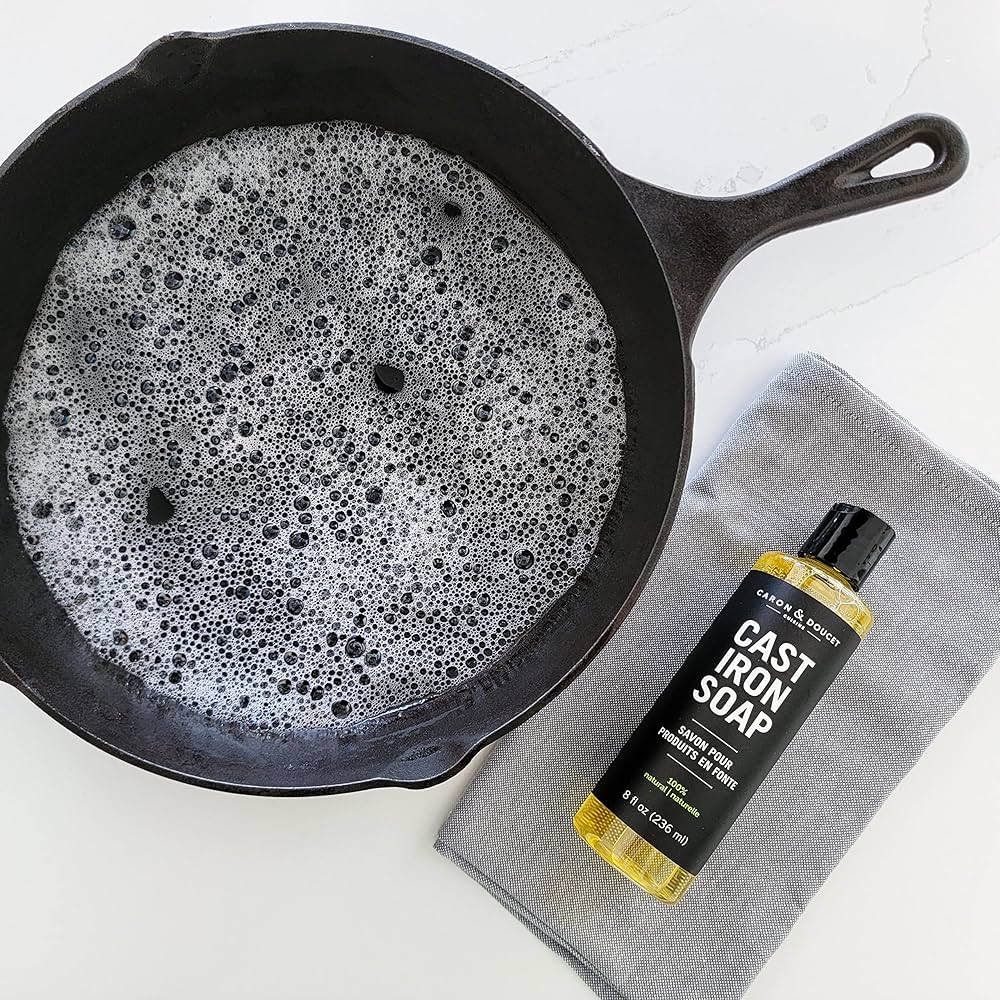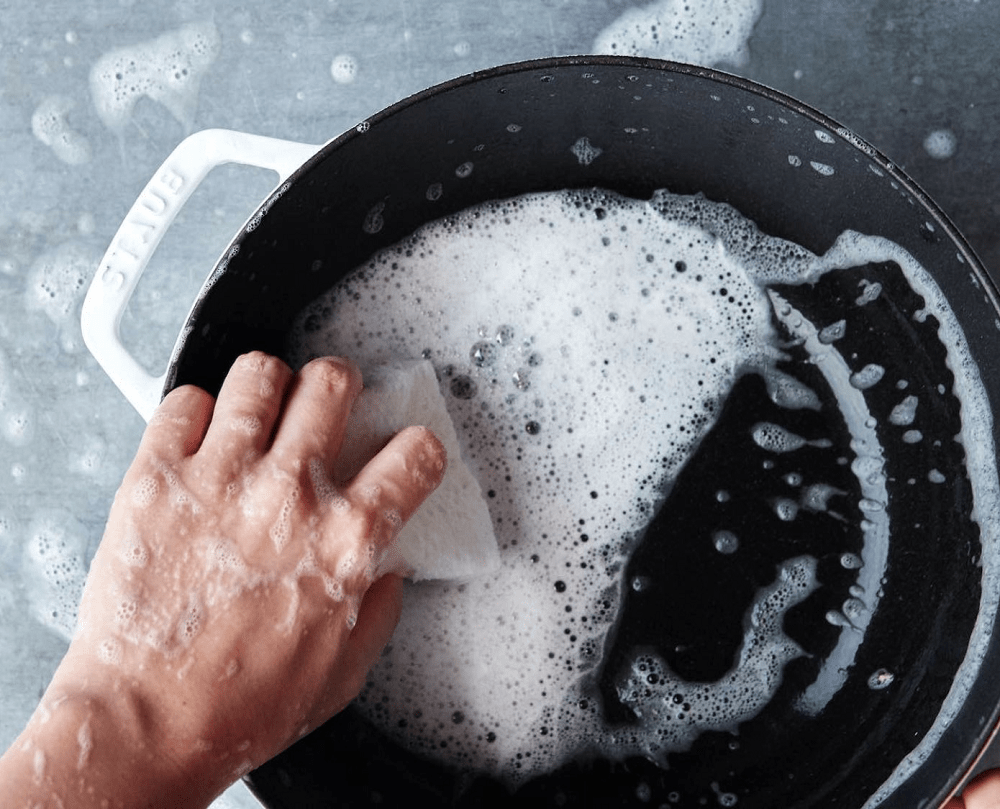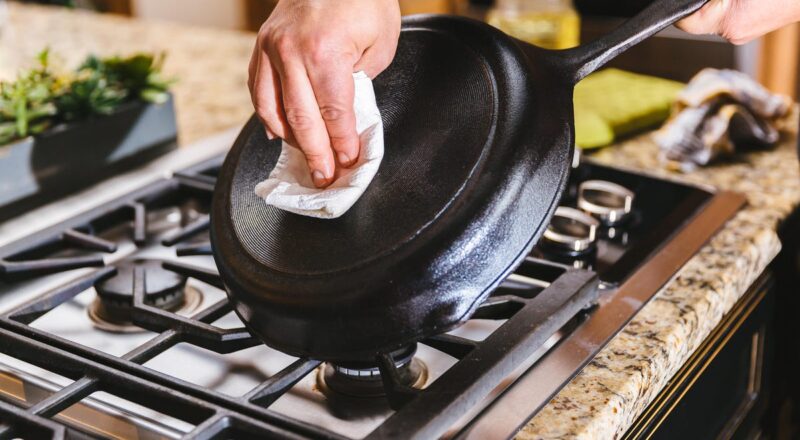Cooking with cast iron is a cherished tradition in many kitchens around the globe. Whether youre searing a delicious steak or simmering a hearty stew, there comes a time when you need to clean the pan. One of the best methods to clean your cast iron is by deglazing it. But how do you deglaze cast iron without damaging its seasoning? Lets dive deeper into this essential culinary skill.

What is Deglazing?
Deglazing is a cooking technique where you add liquid to a hot pan to loosen and dissolve food particles stuck to the bottom. This method not only helps in cleaning the pan but also contributes to making rich and flavorful sauces. When done correctly, deglazing can enhance the taste of your dishes while maintaining the integrity of your cast iron.
The main SEO keyword, ‘how to deglaze cast iron’, should catch the attention of all cooking enthusiasts, especially health-conscious individuals, as cast iron cookware is renowned for its health benefits.

Why Use Cast Iron?
Cast iron cookware is a kitchen staple for several reasons:
- Durability: Properly maintained cast iron can last for generations.
- Versatility: It works well on various heat sources from stovetops to ovens.
- Health Benefits: Cooking with cast iron can fortify your meals with dietary iron.

Step-by-Step Guide: How to Deglaze Cast Iron
Gather Your Supplies
Before you begin, ensure you have the following on hand:
- A hot cast iron pan
- A liquid of your choice (water, broth, wine, etc.)
- A wooden or silicone spatula
Heat the Pan
Turn your stovetop on and allow your cast iron pan to heat up. This step is essential because adding liquid to a cool pan wont effectively lift the stuck-on bits.
Add Liquid
Carefully pour your chosen liquid into the hot pan. The hot surface will cause the liquid to steam, loosening the food particles stuck on the bottom.
Scrape Off Residue
Using your wooden or silicone spatula, gently scrape the bottom of the pan to lift any remaining residue. Ensure you use a utensil that wont damage your pans seasoning.
Continue Cooking or Cleaning
Once the food particles are loosened, you can either continue cooking to make a delicious sauce or pour out the liquid to clean your pan.

Benefits of Deglazing Cast Iron
Learning how to deglaze cast iron comes with several advantages:
- Enhanced Flavors: Those caramelized bits are flavor powerhouses!
- Easy Cleanup: Deglazing helps remove stubborn residues effortlessly.
- Better Seasoning: Regular deglazing can help maintain and improve your cast irons seasoning.
Tips for Successful Deglazing
Choose the Right Liquid
The type of liquid you use for deglazing will influence the taste of your dish. Here are some popular choices:
- Water: Neutral and always available.
- Broth: Adds a savory depth.
- Wine: Perfect for creating sophisticated sauces.
Maintain Your Seasoning
Avoid using harsh utensils or cleaning agents that can strip away your pans seasoning. Instead, opt for wooden or silicone tools during the deglazing process.
Know When to Deglaze
Deglazing isnt just for after cooking. You can also deglaze in the middle of cooking to maximize the dishs flavor profile.
Common Mistakes When Deglazing Cast Iron
Even experienced cooks can make mistakes when deglazing cast iron. Here are some pitfalls to avoid:
Using Cold Liquid
Adding cold liquid to a hot pan can cause thermal shock, potentially damaging your cast iron. Always use room temperature or warm liquids.
Scraping Too Hard
Over-enthusiastic scraping can remove your cast irons seasoning. Be gentle to maintain your pans integrity.
For more detailed tips on seasoning and maintaining your cast iron, visit this guide.
Maintenance After Deglazing
After deglazing, it’s crucial to care for your cast iron properly. Heres what you need to know:
Drying the Pan
Ensure your cast iron is thoroughly dried to prevent rust. You can either towel dry or place it back on the stove for a few minutes.
Re-seasoning
After cleaning, consider applying a thin coat of oil and heating your pan to maintain its seasoning. This step is particularly important if you noticed any bare spots after deglazing.
Learn more about re-seasoning techniques in this article.
Using Deglazed Fond
The residue left after deglazing, known as fond, is incredibly flavorful. Heres how you can use it:
Make a Sauce
Add additional liquid, herbs, and spices to the deglazed pan to create a rich sauce for your meal.
Enhance Your Dish
Use the fond as a base for soups, stews, or gravy, elevating the overall taste of your dish.
Find out more about cooking with cast iron in this pot roast tutorial.
Frequently Asked Questions
Can I deglaze a cast iron pan with acidic liquids?
Yes, but it’s crucial to be cautious as prolonged exposure to acidic liquids can damage the seasoning. Use acidic liquids sparingly.
How often should I deglaze my cast iron pan?
Deglaze your pan as needed, especially after cooking foods that leave significant residues, like meats or caramelized vegetables.
Do I need to re-season my pan after each deglazing?
Not necessarily, but its a good idea to apply a thin coat of oil and heat the pan after cleaning to maintain its seasoning.
Discover more tips and techniques for cast iron cooking, including cooking hash browns and more!
As an Amazon Associate, I earn from qualifying purchases.
Conclusion
Learning how to deglaze cast iron is a valuable skill that every cook should master. This technique not only ensures your pan stays clean but also enhances the flavors of your dishes. Remember to choose the right liquid, be gentle with your tools, and maintain your seasoning. With these tips in mind, you can enjoy the benefits of cooking with cast iron for years to come.

